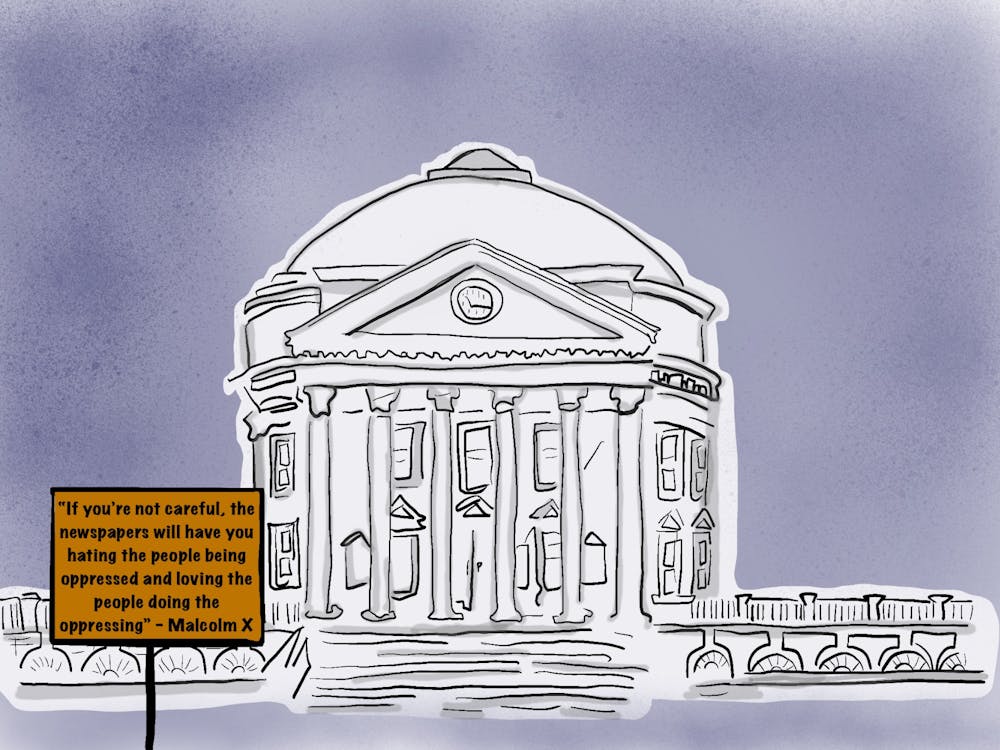The Robertson Media Center at Clemons Library has recently acquired new 3-D technology. Funding procured via the Teaching and Learning Spaces Award has allowed the University to purchase the technology, which enables 3-D modeling and animation.
One of the new items procured is a 3-D laser scanner, which has the ability to scan any object, and create a digital replica of that object. The replica can then be manipulated, and by way of computers, be given motion and allow for further molding on a digital interface. This, in essence, allows a student to create an animation sequence or create different designs.
Students can also utilize Microsoft Kinect, a motion sensor device that allows the “control of on-screen items with gestures and spoken commands,” according to UVa Today. Rather than using a physical controller of sorts, “a student could stand in front of the 3-D display array and use Kinect to control a wireframe on-screen model” of an object.
After creating a digital 3-D object, that object can be recreated physically at the Engineering School’s Rapid-Prototyping Laboratory via 3-D printers. Despite the fact that the 3-D printers are located at the Engineering School, any member of the University can place an order there to print a 3-D object.
Another addition to the set of new technology is the wraparound virtual reality display in Clemons. Jama Coartney, director of the Digital Media Lab, described it as “a sort of personal IMAX theater” in the UVa Today article. The display is useful for providing more of a realistic viewing experience while falling short of 3-D. For example, the equipment would be perfect for taking a virtual tour of an area or building rather than viewing a Microsoft Word document.
This new technology further enhances our education at the University. For example, we are one of the few universities to have a wraparound virtual reality display; generally, such technology is used for military purposes. In fact, we are one of the few places on the continent that has this level of technology so widely and readily available. In fact, it is the rarity of the technology that I find so surprising. Undoubtedly, most of the equipment is expensive, and probably rather fragile. Regardless of these facts, they are still available to any member of the University community. Granted, the usage of some of the equipment does require supervision or training. Nevertheless, their highly accessible nature presents an ideal opportunity for University students to learn some new, interesting skills. These skills can prepare students for future jobs. Technology is becoming an important factor for more and more professions today, even those that may not be inherently technical. Therefore, having additional technological skills would most certainly not hurt. At the University, this technology could be useful for enhancing a job presentation: Instead of discussing an abstract idea, one could create a digital model or a 3-D prototype.
This technology is perhaps most useful for Engineering students, especially in designing different 3-D structures or objects. Yet it is most certainly not limited to those students alone. “One of our goals is truly to bring these technologies traditionally in the sciences and engineering into the arts and humanities,” Coartney said in an interview. For example, students in the drama department who are interested in set design could utilize the technology to test and give form to abstract designs in their head. However, anyone interested in gaming, animation and computer science could equally benefit. The equipment presents an opportunity to make abstract ideas or designs a reality. Because the technology is so new, all of its possibilities have not been explored.
We are fortunate enough to be studying at a University that makes such intricate technology widely available. So the next time you are studying at Clemons, take a break and check out the new technology. It may or may not be useful for your field, but at least it might be interesting.
Fariha Kabir’s column appears Wednesdays in The Cavalier Daily. She can be reached at f.kabir@cavalierdaily.com




